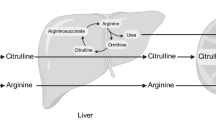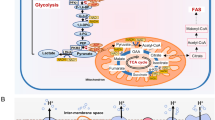Abstract
Chromium is a biologically important element for humans and laboratory animals. Although the favorable effects of trivalent chromium on immune responses of studied animals have been well documented, the precise mechanisms by which the chromium acts on immune system is relatively poor studied. In this study, real-time qPCR technique was employed to evaluate the expression profiles of four immune-related genes (B2M, MHCA, MHCB, and Rap2A) in spleens of the domestic goats, Capra hircus, feeding on four different levels of supplemental chromium (0, 0.5, 1, and 1.5 mg/day) as chromium–methionine. The results showed that 1.5 mg/day of supplemental chromium significantly increased the expression of the four studied genes (P < 0.01). Since the studied genes play important roles in development, activation, and migration of lymphocytes, their increased expression seems to be an unknown mechanism by which chromium impose reinforcing effects on immune system. Therefore, supplemental chromium can be potentially used to improve immune responses especially in animals experiencing any type of stress such as invasion by a pathogen.

Similar content being viewed by others
References
Shrivastava R, Upreti R, Seth P, Chaturvedi U (2002) Effects of chromium on the immune system. FEMS Immunol Med Microbiol 34(1):1–7
Mertz W (1993) Chromium in human nutrition: a review. J Nutr 123(4):626–633
De Flora S (2000) Threshold mechanisms and site specificity in chromium (VI) carcinogenesis. Carcinogenesis 21(4):533–541
Izzotti A, Cartiglia C, Balansky R, D’Agostini F, Longobardi M, De Flora S (2002) Selective induction of gene expression in rat lung by hexavalent chromium. Mol Carcinog 35(2):75–84
Di Bona KR, Love S, Rhodes NR, McAdory D, Sinha SH, Kern N, Kent J, Strickland J, Wilson A, Beaird J, Ramage J, Rasco JF, Vincent JB (2011) Chromium is not an essential trace element for mammals: effects of a “low-chromium” diet. J Biol Inorg Chem 16:381–390
Pechova A, Pavlata L (2007) Chromium as an essential nutrient: a review. Vet Med (Praha) 52(1):1
Haldar S, Mondal S, Samanta S, Ghosh T (2009) Effects of dietary chromium supplementation on glucose tolerance and primary antibody response against peste des petits ruminants in dwarf Bengal goats (Capra hircus). Animal 3(2):209–217
Swanson K, Harmon D, Jacques K, Larson B, Richards C, Bohnert D, Paton S (2000) Efficacy of chromium-yeast supplementation for growing beef steers. Anim Feed Sci Technol 86(1):95–105
Yan X, Zhang W, Cheng J, Wang R, Kleemann DO, Zhu X, Jia Z (2008) Effects of chromium yeast on performance, insulin activity, and lipid metabolism in lambs fed different dietary protein levels. Asian Australas J Anim Sci 21(6):853
Anderson RA (1994) Stress effects on chromium nutrition of humans and farm animals. Nothingham University, Nothingam
Emami A, Zali A, Ganjkhanlou M, Akbari-Afjani A (2012) Nutrient digestibility, carcass characteristics and plasma metabolites in kids fed diets supplemented with chromium methionine. Online J Anim Feed Res 2(2):127–132
Pechova A, Podhorský A, Lokajova E, Pavlata L, Illek J (2002) Metabolic effects of chromium supplementation in dairy cows in the peripartal period. Acta Vet Brno 71(1):9–18
Burton J, Mallard B, Mowat D (1993) Effects of supplemental chromium on immune responses of periparturient and early lactation dairy cows. J Anim Sci 71(6):1532–1539
Burton JL (1995) Supplemental chromium: its benefits to the bovine immune system. Anim Feed Sci Technol 53(2):117–133
Burton JL, Mallard BA, Mowat DN (1994) Effects of supplemental chromium on antibody responses of newly weaned feedlot calves to immunization with infectious bovine rhinotracheitis and parainfluenza 3 virus. Can Vet Res 58(2):148
Chang GX, Mallard BA, Mowat D, Gallo G (1996) Effect of supplemental chromium on antibody responses of newly arrived feeder calves to vaccines and ovalbumin. Can J Vet Res 60(2):140
Moonsie-Shageer S, Mowat D (1993) Effect of level of supplemental chromium on performance, serum constituents, and immune status of stressed feeder calves. J Anim Sci 71(1):232–238
Borgs P, Mallard B (1998) Immune-endocrine interactions in agricultural species: chromium and its effect on health and performance. Domest Anim Endocrinol 15(5):431–438
Clancy HA, Sun H, Passantino L, Kluz T, Munoz A, Zavadil J, Costa M (2012) Gene expression changes in human lung cells exposed to arsenic, chromium, nickel or vanadium indicate the first steps in cancer. Metallomics 4(8):784–793
Maples NL, Bain L (2004) Trivalent chromium alters gene expression in the mummichog (Fundulus heteroclitus). Environ Toxicol Chem 23(3):626–631
Permenter MG, Lewis JA, Jackson DA (2011) Exposure to nickel, chromium, or cadmium causes distinct changes in the gene expression patterns of a rat liver derived cell line. PloS One 6(11):e27730
Ye J, Shi X (2001) Gene expression profile in response to chromium-induced cell stress in A549 cells. Mol Mech Met Toxic Carcinogen 34:189–197
Güssow D, Rein R, Ginjaar I, Hochstenbach F, Seemann G, Kottman A, Ploegh H (1987) The human beta 2-microglobulin gene. Primary structure and definition of the transcriptional unit. J Immunol 139(9):3132–3138
Apanius V, Penn D, Slev PR, Ruff LR, Potts WK (1997) The nature of selection on the major histocompatibility complex. Crit Rev Immunol 17(2):40
Penn DJ, Potts WK (1999) The evolution of mating preferences and major histocompatibility complex genes. Am Nat 153(2):145–164
Thornhill R, Gangestad SW, Miller R, Scheyd G, McCollough JK, Franklin M (2003) Major histocompatibility complex genes, symmetry, and body scent attractiveness in men and women. Behav Ecol 14(5):668–678
McLeod SJ, Li AH, Lee RL, Burgess AE, Gold MR (2002) The Rap GTPases regulate B cell migration toward the chemokine stromal cell-derived factor-1 (CXCL12): potential role for Rap2 in promoting B cell migration. J Immunol 169(3):1365–1371
McLeod SJ, Shum AJ, Lee RL, Takei F, Gold MR (2004) The Rap GTPases regulate integrin-mediated adhesion, cell spreading, actin polymerization, and Pyk2 tyrosine phosphorylation in B lymphocytes. J Biol Chem 279(13):12009–12019
Paganini S, Guidetti GF, Catricalà S, Trionfini P, Panelli S, Balduini C, Torti M (2006) Identification and biochemical characterization of Rap2C, a new member of the Rap family of small GTP-binding proteins. Biochimie 88(3):285–295
Chomczynski P, Sacchi N (2006) The single-step method of RNA isolation by acid guanidinium thiocyanate–phenol–chloroform extraction: twenty-something years on. Nat prot 1(2):581–585
Untergasser A, Nijveen H, Rao X, Bisseling T, Geurts R, Leunissen JA (2007) Primer3Plus, an enhanced web interface to Primer3. Nucleic Acids Res 35(suppl 2):W71–W74
Rozen S, Skaletsky H (1999) Primer3 on the WWW for general users and for biologist programmers. In: Bioinformatics methods and protocols. Springer, pp 365–386
Kibbe WA (2007) OligoCalc: an online oligonucleotide properties calculator. Nucleic Acids Res 35(suppl 2):W43–W46
Ye J, Coulouris G, Zaretskaya I, Cutcutache I, Rozen S, Madden TL (2012) Primer-BLAST: a tool to design target-specific primers for polymerase chain reaction. BMC Bioinforma 13(1):134
Pfaffl MW (2001) A new mathematical model for relative quantification in real-time RT–PCR. Nucleic Acids Res 29(9):e45–e45
Radonić A, Thulke S, Mackay IM, Landt O, Siegert W, Nitsche A (2004) Guideline to reference gene selection for quantitative real-time PCR. Biochem Biophys Res Commun 313(4):856–862
Livak KJ, Schmittgen TD (2001) Analysis of relative gene expression data using real-time quantitative PCR and the 2− ΔΔC t method. Methods 25(4):402–408
Wilkening S, Bader A (2004) Quantitative real-time polymerase chain reaction: methodical analysis and mathematical model. J Biol Technol 15(2):107
Bohnsack J, Brown E (1986) The role of the spleen in resistance to infection. Ann Rev Med 37(1):49–59
Wijburg O, VAN ROOIJEN N (1997) Role of spleen macrophages in innate and acquired immune responses against mouse hepatitis virus strain A59. Immunology 92(2):252–258
Abbas AK, Lichtman AH, Pillai S (2005) Cellular and molecular immunology. Saunders, Philadelphia
Penn DJ (2002) The scent of genetic compatibility: sexual selection and the major histocompatibility complex. Ethology 108(1):1–21
Kegley E, Spears J, Brown T (1997) Effect of shipping and chromium supplementation on performance, immune response, and disease resistance of steers. J Anim Sci 75(7):1956–1964
Acknowledgments
We are thankful to Dr. M. Ganjkhanlou, Dr. A. Zali, and A. Emami for their helps with this study. This work was financially supported by the University of Tehran.
Author information
Authors and Affiliations
Corresponding author
Additional information
Mostafa Sadeghi and Mohammad Javad Najafpanah are joint first authors.
Appendix 1
Appendix 1
Rights and permissions
About this article
Cite this article
Sadeghi, M., Najafpanah, M.J. Analysis of Immune-Relevant Genes Expressed in Spleen of Capra hircus Kids Fed with Trivalent Chromium. Biol Trace Elem Res 156, 124–129 (2013). https://doi.org/10.1007/s12011-013-9828-z
Received:
Accepted:
Published:
Issue Date:
DOI: https://doi.org/10.1007/s12011-013-9828-z




